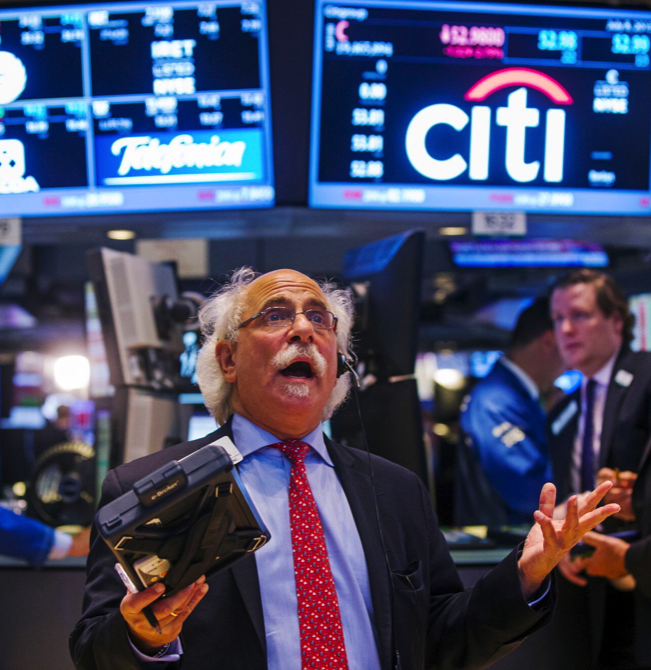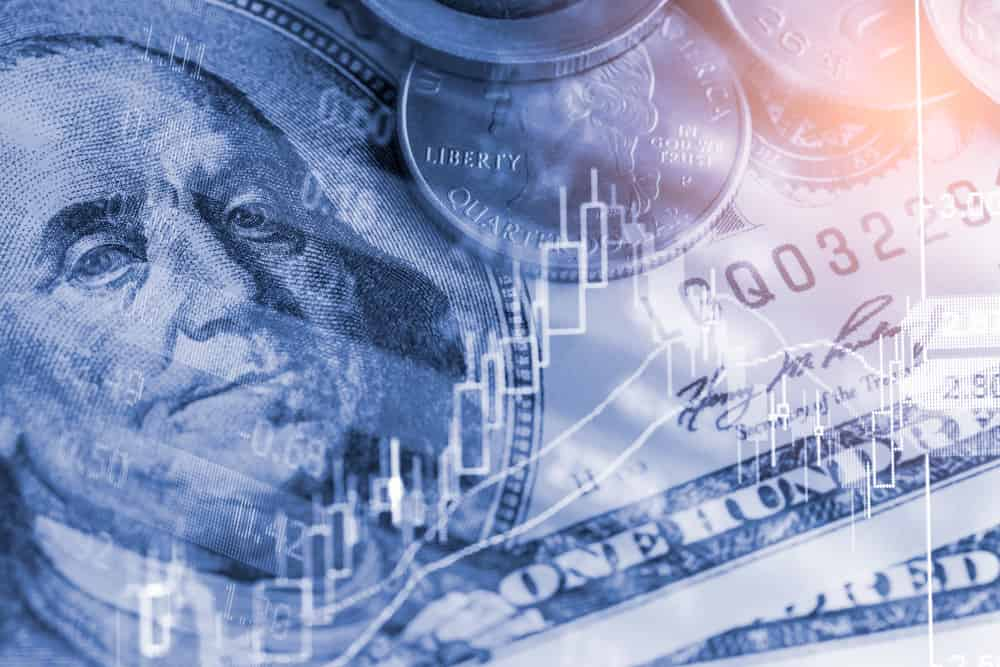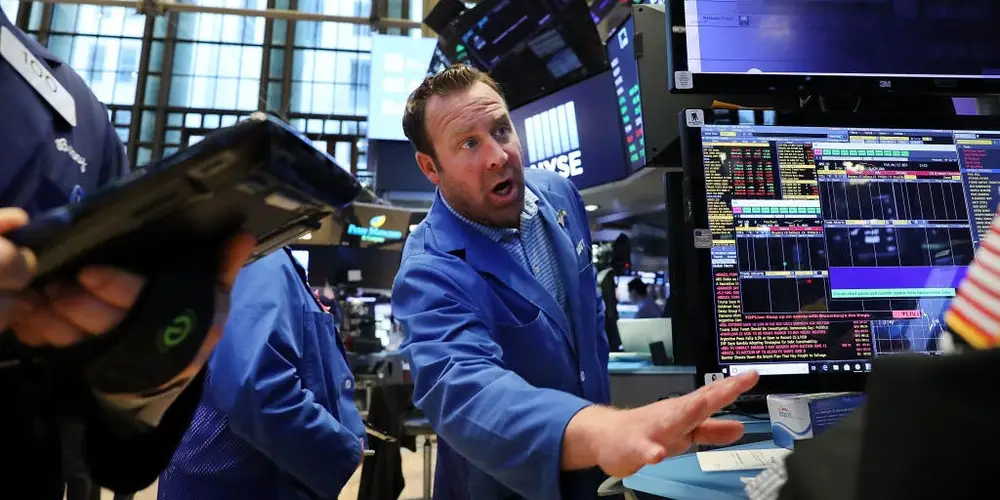Stock Market Crash: 45% Downside Ahead For S&P 500, Expert Warns
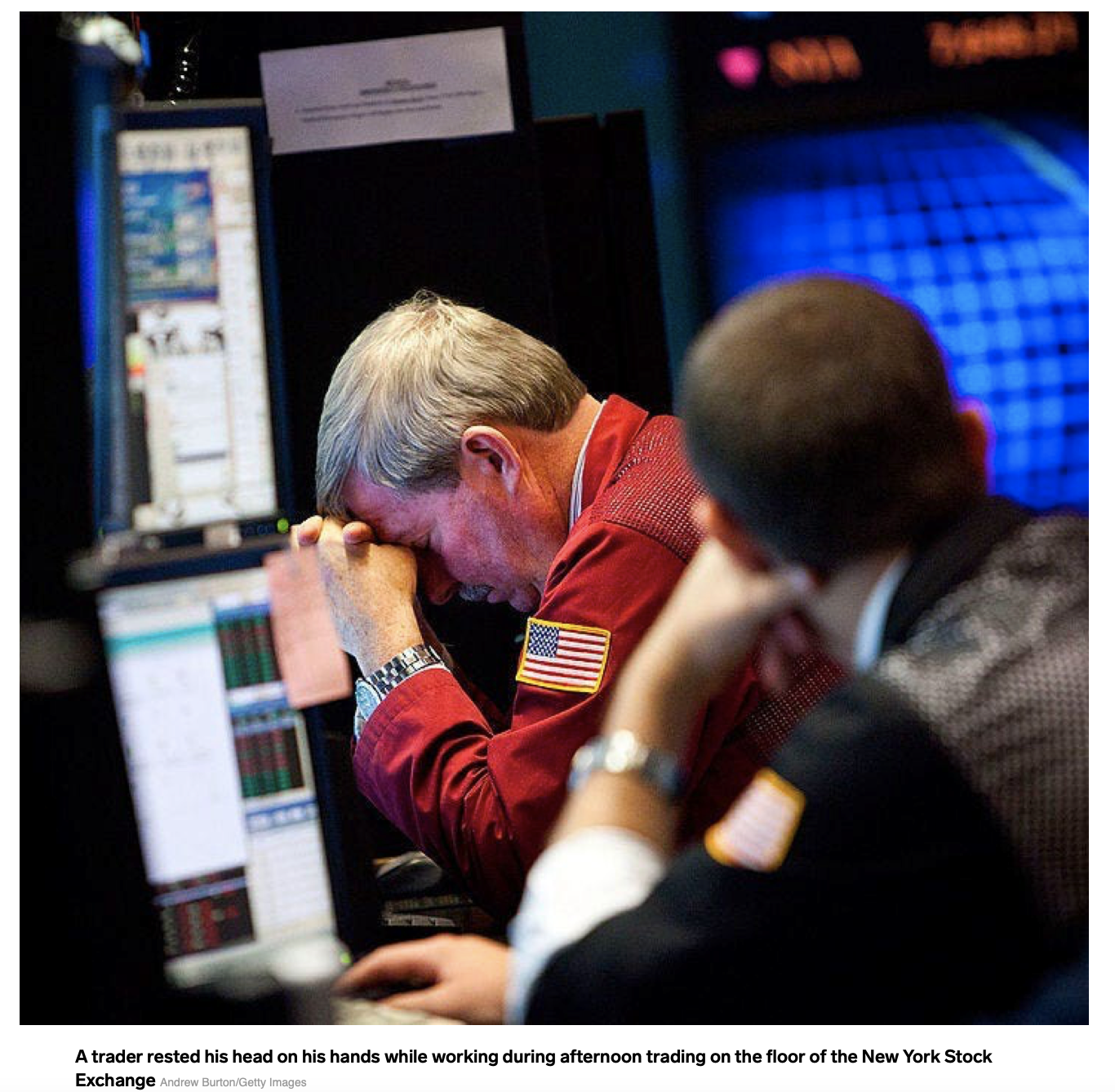
- Leading economic indicators paint a picture of disaster, says Jon Wolfenbarger.
- Yet, stock market investors remain bullish, he said.
- Wolfenbarger has been warning of a bear market since late 2021.
Jon Wolfenbarger doesn't understand the optimism that remains among stock-market investors.
The S&P 500 is up more than 7% year-to-date, and indicators like the NAAIM Exposure Index show sentiment is trending bullish. The index measures active investment managers' exposure to equities.
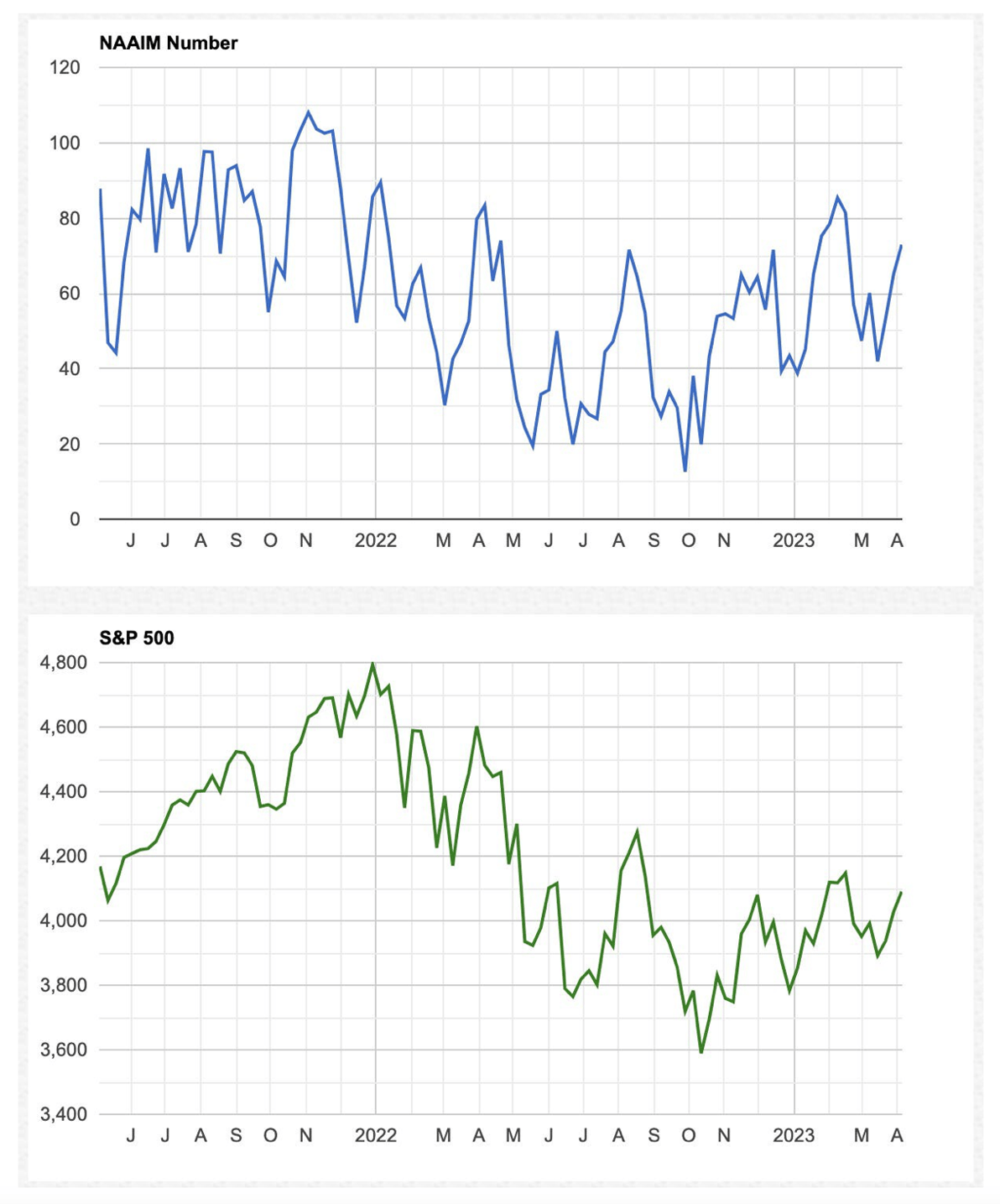
And yet to Wolfenbarger, it remains obvious that the US economy is heading into a recession that will crush stocks. Wolfenbarger is the founder of investment research firm Bull And Bear Profits, and has worked as a securities analyst at Allianz Global Investors and an investment banker at Merril Lynch and JPMorgan. He's been warning of a significant stock market decline since late 2021.
"People are ignoring all the lessons of history," Wolfenbarger told Insider on Friday. "They're just excited that inflation may slow, and the Fed may stop raising interest rates. But the Fed was cutting interest rates before the Great Recession ever started."
One indicator that Wolfenbarger is watching is the Leading Economic Index from The Conference Board. The index is an aggregate measure of 10 leading economic indicators, including manufacturing activity, stock performance, homebuilding permits, consumer sentiment, and unemployment claims. It dipped into recessionary territory in recent months, like it did before the 2001 and 2008 recessions.
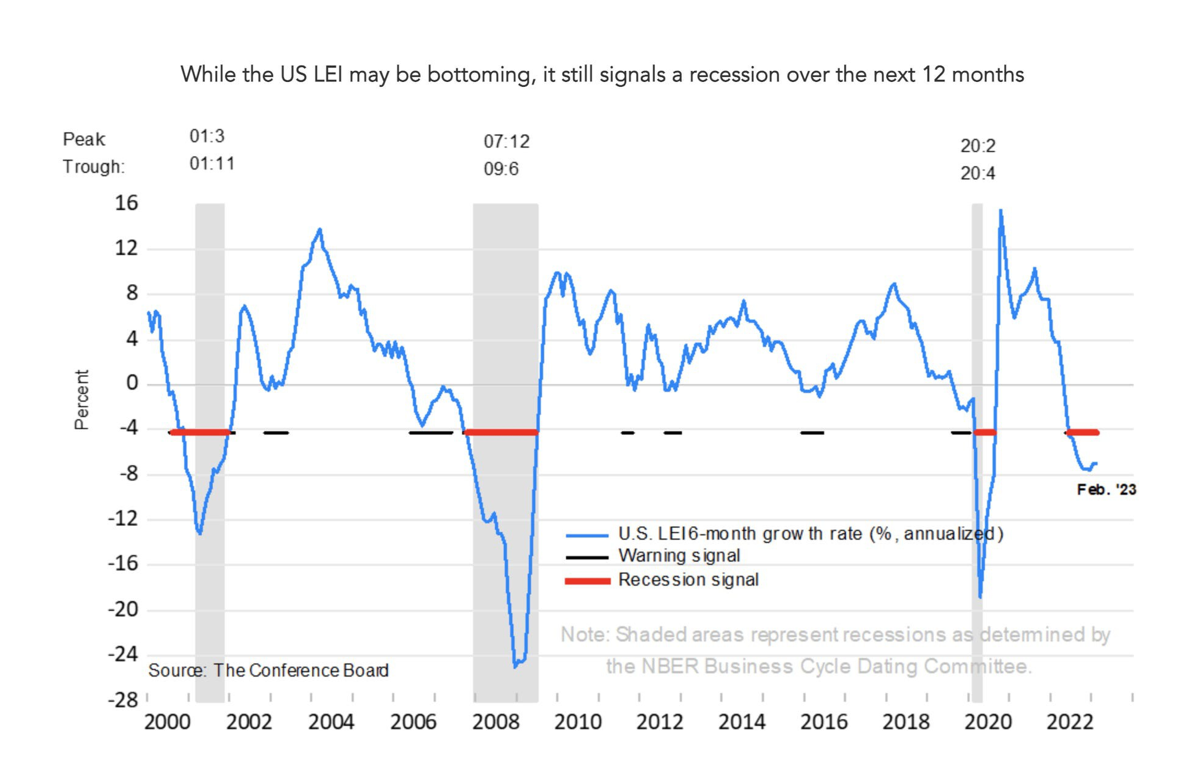
Another is the ISM Manufacturing PMI, a gauge of activity. It fell for the fifth straight month in March, reflecting weakening demand.
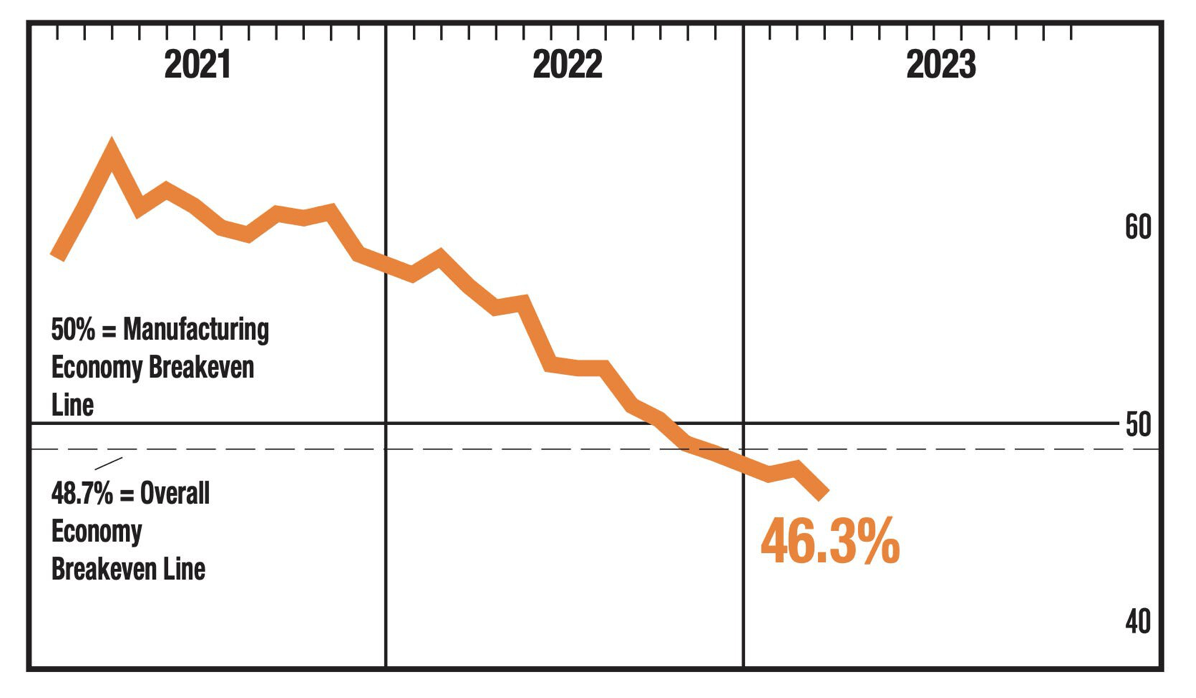
And then there's the yield curve, which remains near its most inverted level in four decades. An inverted yield spread between the 3-month Treasury bill and 10-year Treasury note have preceded every recession since the 1960s.
Inversions of the spread between yields on the 2-year and 10-year notes — shown below — has been slightly less accurate, but they are still a fairly reliable recession and bear market indicator.
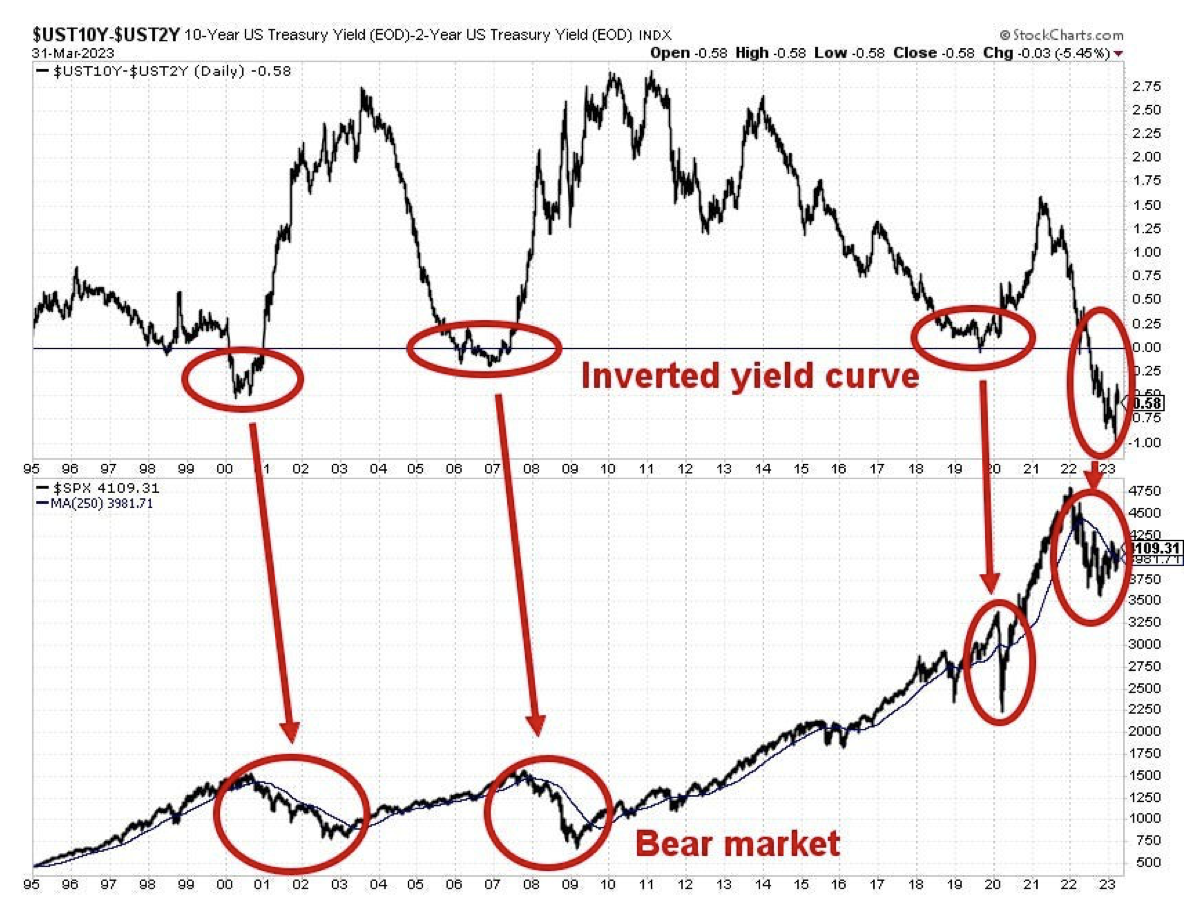
Finally, lending standards are tightening, which will lead to a credit crunch, Wolfenbarger said. The percentage of banks tightening their lending standards is now above 44%, and is approaching levels seen during prior downturns. Banks are pulling back on lending to make sure they have ample liquidity levels as their bond holdings have taken big losses over the last year-plus.
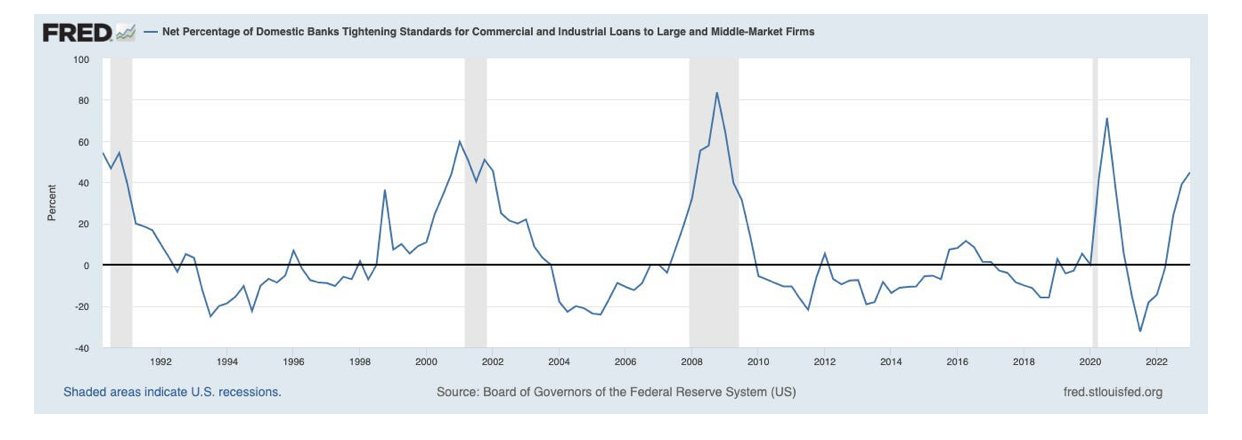
Wolfenbarger believes the S&P 500 will bottom at around 2,250, which represents 45% downside from it's current level of 4,105.
His bearish outlook stems from how high stock valuations are relative to 10-year Treasury yields. Below is a chart he cited from John Hussman, the president of the Hussman Investment Trust who called the 2000 and 2008 crashes.
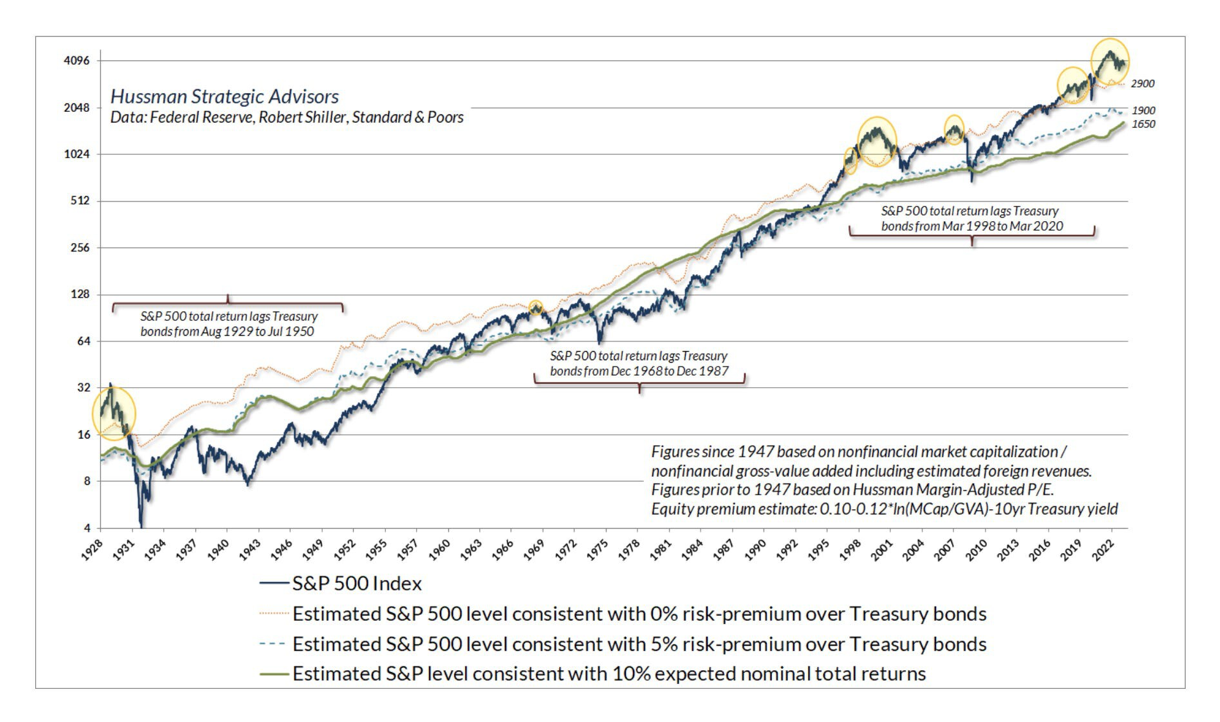
He said the bear market would resume in a big way once unemployment starts to rise. As of Friday, it sits at 3.5%. But the Fed projects it to go to 4.5% by the end of 2023.
Wolfenbarger's views in context
Wolfenbarger's call on where stocks go is more extreme than ones you'll find from strategists at big Wall Street institutions.
The most bearish strategists right now are Morgan Stanley's Mike Wilson and Bank of America's Savita Subramanian, who both believe the index could fall as low as 3,000. That would be a 27% drop from current levels.
But Wolfenbarger's recession call is in line with many forecasts. According to a Wall Street Journal survey, the median recession probability given by forecasters is 65%.
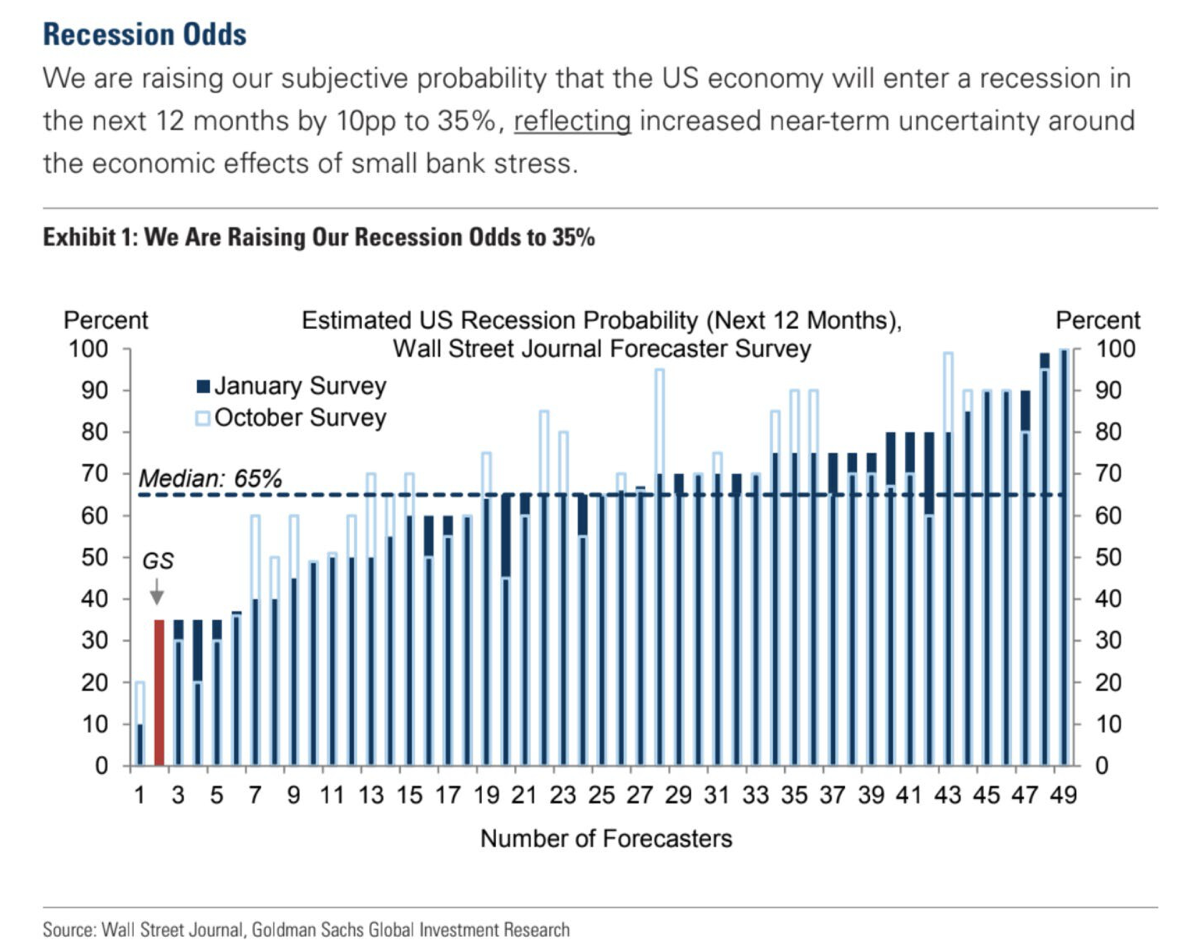
Even the Federal Reserve places a 57% chance on a recessionary outcome.
Wolfenbarger also has company in thinking that stock market investors aren't heeding the warnings of a coming downturn. According to Jim Bianco, the founder of Bianco Research, the Intercontinental Exchange Bank of America MOVE Index, which measures volatility in the bond market, is signaling a high level of uncertainty among bond investors about what the Fed will do in June. Many times when uncertainty has risen this high in the past, he said, it preceded an economic downturn. Yet, the stock market doesn't seem to reflect this uncertainty, he said.
"Every time it's spiked this high in the past, things have gotten bad," Bianco said. "And every other time it's spiked this high in the past, so did the VIX and so did the stock market. But this time the stock market's chill about this whole thing."
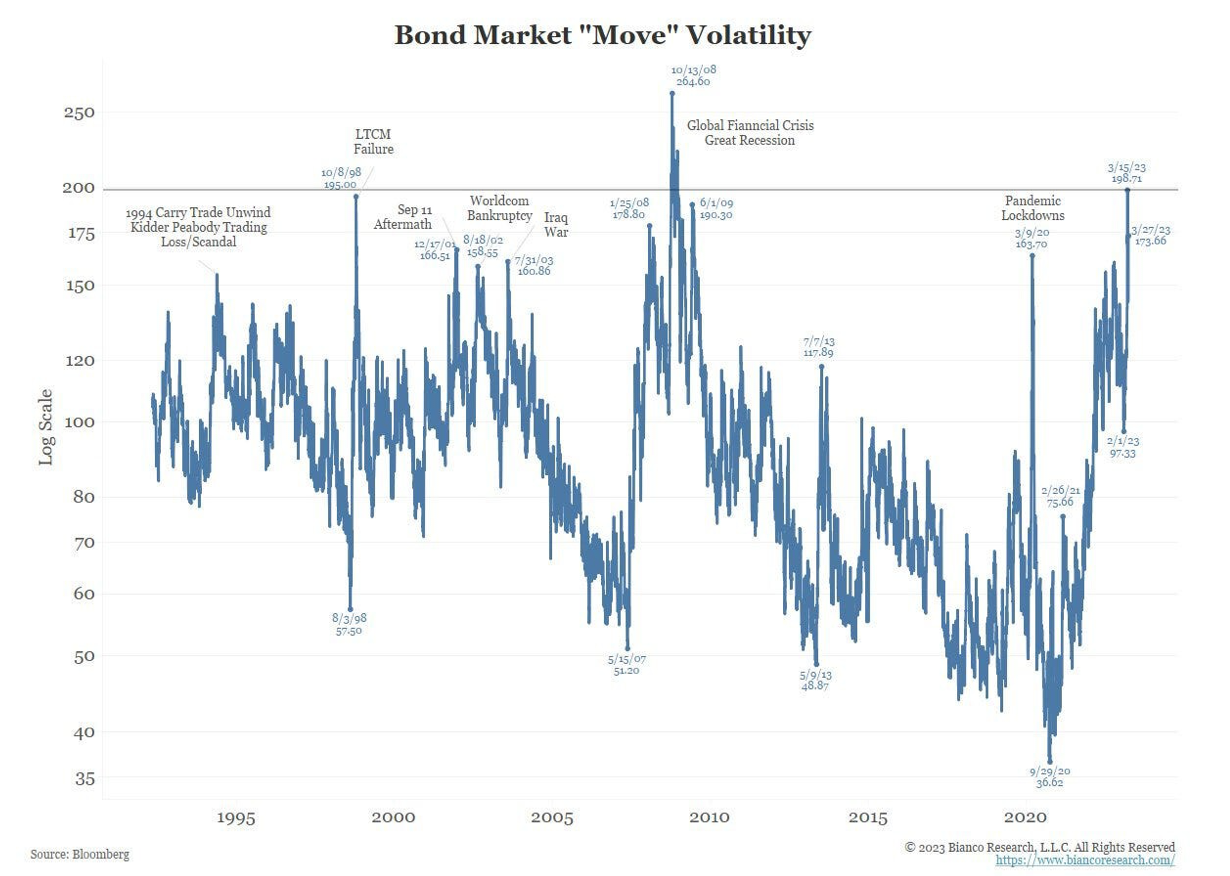
It remains to be seen how the economy will hold up to the Fed's hawkish regime. The March jobs numbers were as economists expected on Friday, with the US economy adding 236,000 jobs last month.
Arguably the biggest threat to the labor market right now is the pullback in lending from smaller banks. If this throws the economy into a downward spiral, stocks could fall accordingly in short order.

